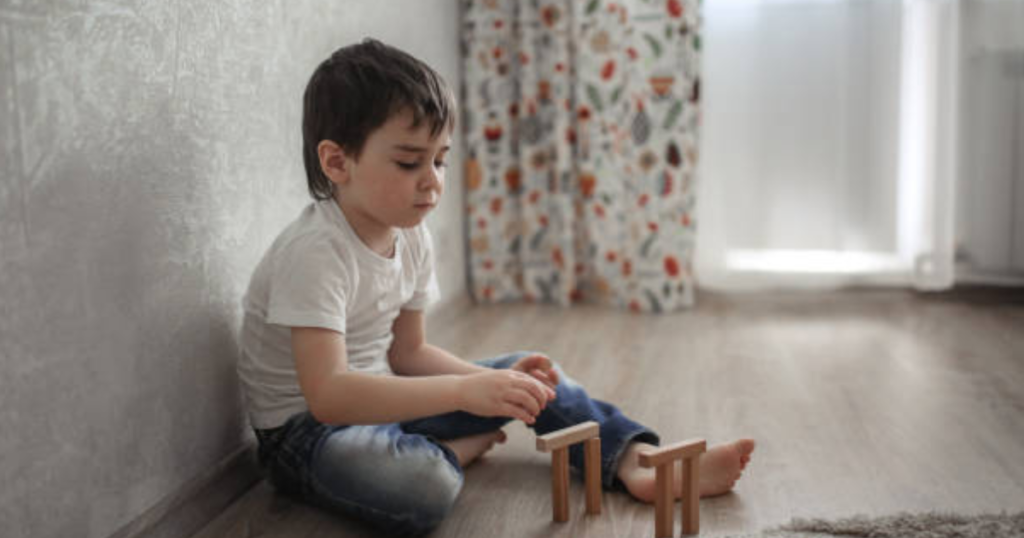OCD in Children: How to Manage It

Obsessive-Compulsive Disorder involves a cycle of intrusive thoughts (obsessions) that lead to repetitive actions or rituals (compulsions) aimed at alleviating the anxiety caused by these thoughts. Children with OCD experience intense distress and feel driven to perform these rituals, even though they understand that the thoughts are irrational. Common obsessions include fears of germs, harm coming to loved ones, or concerns about symmetry and order. Compulsions might manifest as excessive hand washing, checking locks repeatedly, or needing to arrange objects in a specific way.
OCD is more prevalent in children than previously thought. Research suggests that about 1–2% of children and adolescents are affected by OCD. It often emerges during childhood or adolescence, although it can also start in early adulthood. The disorder can manifest in various ways, and its impact can range from mild to severe. Early recognition and intervention are vital to managing OCD effectively and improving the child’s quality of life.
Symptoms of OCD in Children
In children, OCD symptoms can sometimes be challenging to identify as they may be dismissed as normal childhood behaviors. However, recognizing these symptoms early can lead to effective intervention and management.
Obsessive Thoughts
Children with OCD often experience intrusive and distressing thoughts that can be persistent and hard to control. These thoughts might revolve around themes like contamination, harm, symmetry, or taboo subjects. For instance, a child may have constant fears of germs and may obsessively worry about getting sick from touching things.
Compulsive Behaviors
Compulsions are repetitive behaviors or mental acts that a child feels compelled to perform in response to their obsessive thoughts. These behaviors are intended to reduce anxiety or prevent a feared event. For example, a child may feel the need to wash their hands excessively or arrange objects in a specific order to alleviate their distress.
Fear of Contamination
Children with OCD may exhibit a heightened fear of contamination, leading to excessive hand washing or avoiding situations they perceive as dirty. This fear can significantly impact their daily activities and interactions, making it difficult for them to engage in typical childhood experiences.
Checking Rituals
Some children with OCD may develop checking rituals, such as repeatedly ensuring doors are locked, appliances are turned off, or homework is done correctly. These rituals provide temporary relief from anxiety but can consume a significant amount of time and interfere with the child’s daily routine.
Symmetry and Orderliness
A child with OCD might exhibit an extreme need for symmetry and orderliness. They may spend an excessive amount of time arranging their belongings or insisting that things be placed in a specific manner. Deviating from this order can cause significant distress for the child.
Hoarding Tendencies
Hoarding tendencies can manifest in children with OCD, where they have difficulty discarding items that most people would consider insignificant or worthless. This behavior can lead to cluttered living spaces and difficulties partaking in regular activities due to their attachment to objects.
Repetitive Counting or Repeating
Children with OCD might engage in repetitive counting, tapping, or repeating specific phrases to alleviate their anxiety. These behaviors can be time-consuming and interfere with their ability to focus on school, hobbies, or social interactions.
Rituals Associated with Harm or Accidents
Some children with OCD may develop rituals aimed at preventing harm or accidents to themselves or others. This can involve actions like touching certain objects a certain number of times or repeating certain phrases to ensure safety.
Intrusive Sexual, Violent, or Taboo Thoughts
Children with OCD may experience distressing thoughts related to sexual, violent, or taboo subjects, even though they find these thoughts repugnant and contrary to their values. These thoughts can lead to extreme anxiety and discomfort, prompting them to engage in compulsive behaviors to neutralize the distress.
How to manage OCD in Children

When OCD manifests in children, it requires careful management to ensure their well-being and healthy development. Effectively managing OCD in children requires fostering a supportive environment and implementing targeted interventions.
Positive Reinforcement and Rewards
Encourage positive behavior changes by implementing a reward system. Acknowledge the child’s efforts in facing their fears or resisting compulsions and provide age-appropriate incentives for their accomplishments. This approach can motivate the child to engage in treatment activities and build their confidence.
Supportive Family Involvement
Family support plays a crucial role in managing childhood OCD. Involve parents and caregivers in the treatment process, helping them understand the strategies being employed and how they can reinforce them at home. Collaborate with the family to ensure consistent messaging, expectations, and reinforcement of healthy coping mechanisms.
Mindfulness and Relaxation Techniques
Mindfulness and relaxation techniques, such as deep breathing, meditation, and progressive muscle relaxation, can help children manage their anxiety and intrusive thoughts. Teach these techniques in an age-appropriate manner, emphasizing the importance of being present in the moment and cultivating a non-judgmental attitude towards their thoughts and feelings.
Structured Routine and Predictability
Children with OCD often find comfort in routine and predictability. Establishing a structured daily routine can help alleviate anxiety and provide a sense of stability. Involve the child in creating a schedule that includes time for school, play, relaxation, and exposure exercises. Consistency can reduce uncertainty, which is a common trigger for OCD symptoms.
Psychoeducation for the Child and Family
Educating both the child and their family about OCD is an essential first step. Provide age-appropriate information to the child, helping them understand that their intrusive thoughts and rituals are a part of the condition and not indicative of their character. Likewise, involve parents, guardians, and siblings in educational sessions to enhance their understanding of OCD and how to offer appropriate support.
Cognitive-Behavioral Therapy (CBT)
CBT is considered the gold standard for treating childhood OCD. Work with a qualified mental health professional to tailor ERP exercises to the child’s age and severity of symptoms. Gradual exposure to triggering situations or thoughts, followed by refraining from compulsive behaviors, can help children gradually build tolerance and reduce the impact of their obsessions.
Reminder
Early recognition of OCD symptoms in children is crucial for providing appropriate support and intervention. While children may display varying degrees of these symptoms, it is essential to seek professional help if their behaviors and thoughts significantly interfere with their daily lives and well-being. Prompt treatment can help manage OCD symptoms and improve the child’s quality of life.
If your child displays OCD symptoms, visit Mindshift Psychological Services. Their team of experts will guide and support you on how to manage OCD in children. Check out their website to learn more about them, or contact them at (714) 584-9700 to schedule an appointment.



